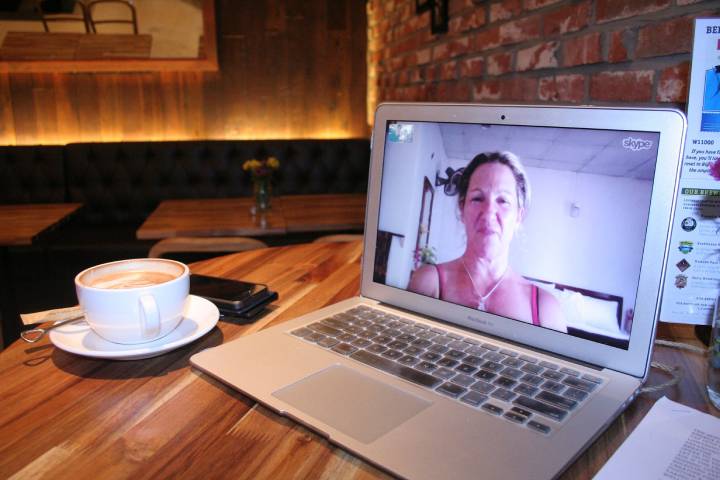Business
6 Ways To Improve Collaboration In Remote Agile Teams
Remote agile teams are often well-suited to periods of disruption as long as project leaders can efficiently and effectively adjust to fast-changing business landscapes due to new technology, digital transformations, and upheaval.

Remote agile teams are often well-suited to periods of disruption as long as project leaders can efficiently and effectively adjust to fast-changing business landscapes due to new technology, digital transformations, and upheaval.
The knowledge that you create for your employees must emphasize being collaborative, efficient, and empowering to encourage them to perform at their best. There’s always a better way to work and collaborate with your remote team. Here’s a great post to read if you want to make the agile method effective.
Communication can become a breeze, especially when the team is in different locations. Using these online collaboration tools, you can empower each member and ensure that deadlines are met, and goals are achieved within the shortest amount of time possible.
Additionally, there are many other methods of improving collaboration, even in a remote work setup. Below are some best practices on how you can enhance team collaboration for small agile teams:
Empower Each Member Success with this new way of working and collaborating requires empowering your remote team with the tools they want to succeed. This should include utilizing tools for group chats, video conferencing, and task management systems.
Tools that allow your staff to interact regardless of location are a must-have, especially in a remote-working environment. Through conference calls, the members will share their thoughts on getting the project done in the least possible time. Once everyone is in the same room, brainstorming, problem-solving, and other essential communication can occur.
Table of Contents
1. Follow A Scrum Team Structure
Scrum provides a flexible framework for teams to follow. This enables the structure to be useful for groups and organizations of various sizes. Within the Scrum team structure, everyone has an equal voice.

This framework doesn’t follow a hierarchy, unlike traditional development frameworks. Members manage themselves and also have many cross-functional roles. To ensure the plan is completed on time and within budget, every team member is equally essential and has all the skills and knowledge necessary to achieve project completion.
The Scrum structure has always been associated with an agile team setup. This is because it complements an elegant arrangement very well. The Scrum structure recognizes that each member has a specific skill set that helps ensure productivity and has the team complete projects within the deadline.
2. Boost Morale and Bond Remotely
Some types of activities that help keep morale high include get-togethers for light meals or after-work social activities. However, these are difficult to do for employees in a remote working setup.
In the realm of virtual teams, it’s beneficial to organize regular gatherings, whether on a weekly or monthly basis. Such occasions provide an ideal platform to foster team spirit and camaraderie. Consider encouraging participants to share delightful anecdotes about their beloved furry companions or proudly exhibit their unique hobbies.
Additionally, incorporating interactive virtual pastimes from reputable providers like Escapely can infuse a tremendous amount of excitement into your team’s dynamic. Engaging in activities such as solving intriguing murder mysteries or orchestrating a daring escape from a deserted oasis can undoubtedly lead to an unforgettable and exhilarating experience for your entire team.
People are social creatures, and weak bonding—even through virtual calls, can lighten up the work week a little bit. Team members must make an effort to be social, courteous, precise, and discreet. Leaders need to ensure that everyone who works remotely feels as comfortable as if they’re working with each other in person.
3. Monitor Check-Ins And Performance
Using the agile method requires you to empower, assist, and collaborate with your remote workforce consistently. When you want to fine-tune the process, you need to evaluate regularly. This also enables you to learn more about how each member is performing.
With constant monitoring and evaluation, it is easier to spot weak points within the team and improve these areas. Most of the time, this involves pinpointing a bottleneck and looking for ways to decongest it.
Additionally, you’ll be able to observe patterns that depict how team dynamics affect one another. Therefore, the team needs to meet together regularly to analyze what worked, and what didn’t and brainstorm how to improve processes.

4. Adapt Remote Coaching and Development Training
Even in a work-from-home setup, personal and career development should not remain stagnant. Your team must be given a chance to improve on existing skills and develop new ones. If you want one-on-one personal coaching, you can have it through video conferencing. Involve all team members and give them the right coaching and development training in an online setup.
Members must also be trained to utilize software and tools properly. Each software has features that could help employees perform faster and more efficiently. However, not all of these features are readily apparent. Hence, you need to train your team to utilize such features more regularly.
Some skills can also be developed through virtual learning. So, whenever possible, don’t hesitate to enroll promising members in short courses and virtual conferences that would substantially improve their technical skills or even their leadership and soft skills.
5. Recalibrate Remote Processes
What was influential in the office may not be relevant in remote work environments. Find the perfect balance by working backward—start with your desired objectives and adjust your agile procedures as needed. Rather than following a strategy, adapt to the circumstances and unique needs of the business and your team members.
When teams are together in person, they may rely on more organic interactions to create innovative solutions. However, communication has to be strategic and structured when working remotely. You and your team can test various project management tools to see which one works best for most groups.
There must be more room for compromise, especially if you’re working with a diverse and international team. For example, varying time zones must be taken into account. This way, deadlines, reports, and meetings can be synchronized.
Final Word
When companies transition to a remote workforce, there’s a drastic change in working conditions and collaboration, which can significantly affect efficiency and productivity. It’s critical to provide structure to help your team work together in an efficient, collaborative, and productive manner—even while working remotely.
-

 Instagram4 years ago
Instagram4 years agoBuy IG likes and buy organic Instagram followers: where to buy them and how?
-

 Instagram4 years ago
Instagram4 years ago100% Genuine Instagram Followers & Likes with Guaranteed Tool
-

 Business5 years ago
Business5 years ago7 Must Have Digital Marketing Tools For Your Small Businesses
-

 Instagram4 years ago
Instagram4 years agoInstagram Followers And Likes – Online Social Media Platform















